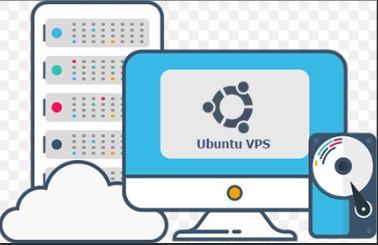Amazon Vps Service
In the ever-evolving landscape of digital infrastructure, Amazon VPS stands as a cornerstone of modern technological advancements. It represents a pivotal tool for businesses seeking robust and scalable solutions to meet their computing needs.
This article delves into the intricacies of Amazon VPS, exploring its definition, importance in contemporary business environments, key features, benefits, practical use cases, setup guidelines, management strategies, and prospects.
Understanding Amazon VPS
Amazon VPS, or Virtual Private Server, represents a paradigm shift in how businesses manage their computing resources in the cloud.
At its core, Amazon VPS offers a virtualized instance within the expansive infrastructure of Amazon Web Services (AWS), providing users with dedicated computing resources that operate independently while leveraging shared physical hardware.
This concept marks a departure from traditional web hosting models where websites and applications typically share resources on a single server.
Instead, Amazon VPS grants users more control and isolation, allowing them to customize their virtual environment according to specific needs and workloads.
In practical terms, Amazon VPS functions akin to having your virtual machine in the cloud. Users can configure their VPS instance with preferred operating systems, adjust CPU and RAM allocations, and install software applications as required.
This flexibility is crucial for businesses that demand tailored computing environments to support their operations efficiently.
Moreover, Amazon VPS is designed to handle a wide range of workloads, from simple web hosting to complex application deployments.
It offers scalability options that enable seamless expansion or contraction of resources based on fluctuating demands, ensuring optimal performance without the constraints typically associated with physical servers.
Compared to traditional web hosting, which often imposes limitations on resource allocation and scalability, Amazon VPS excels in providing robust solutions that scale with business growth.
This scalability is bolstered by AWS’s global infrastructure, which spans multiple geographic regions and availability zones, ensuring high availability and redundancy for mission-critical applications.
Security is another hallmark of Amazon VPS. By leveraging AWS’s comprehensive security features, including Virtual Private Cloud (VPC), Security Groups, and Network Access Control Lists (ACLs), users can create secure, isolated environments for their applications.
These measures mitigate potential security risks and adhere to industry compliance standards, making Amazon VPS a trusted choice for sensitive workloads.
In essence, Amazon VPS transforms the way businesses approach cloud computing by offering a blend of customization, scalability, and security.
Whether deploying e-commerce platforms, content management systems, or development environments, businesses can harness the power of Amazon VPS to streamline operations, enhance performance, and drive innovation in their digital strategies.
Amazon VPS, or Virtual Private Server, epitomizes a virtualized environment within Amazon Web Services (AWS) that offers dedicated resources to users while operating within a shared physical server infrastructure.
This concept diverges significantly from traditional web hosting models by providing isolated instances with customizable configurations tailored to specific operational requirements.
Amazon VPS Differentiation from Traditional Web Hosting
Unlike traditional web hosting, which typically confines users to predefined server configurations and limited scalability options, Amazon VPS empowers businesses with unparalleled flexibility.
It allows for fine-grained control over computing resources, ensuring optimized performance and enhanced security through virtualization technologies.
Key Features of Amazon VPS
Scalability and Flexibility
Amazon VPS excels in scalability, leveraging auto-scaling capabilities to dynamically adjust computing resources in response to fluctuating demands.
Elastic Load Balancing (ELB) further enhances this scalability by distributing incoming traffic across multiple instances, optimizing performance, and ensuring seamless user experiences.
Security Features
The integration of Virtual Private Cloud (VPC) architecture within Amazon VPS establishes a secure, isolated network environment.
Security Groups and Network Access Control Lists (ACLs) offer granular control over inbound and outbound traffic, fortifying defenses against potential threats and ensuring compliance with stringent security standards.
Integration with Other AWS Services
Amazon VPS seamlessly integrates with various AWS services, such as EC2 instances for computing power and S3 storage for scalable data storage solutions. This integration fosters a cohesive ecosystem where different components synergize to deliver robust and comprehensive cloud solutions.
Benefits of Using Amazon VPS
Cost-Effectiveness
Amazon VPS operates on a pay-as-you-go pricing model, allowing businesses to optimize cost-efficiency by paying only for utilized resources. Additionally, Reserved Instances and Savings Plans offer discounted pricing options for predictable workloads, enabling significant cost savings over time.
Reliability and Uptime
Backed by Amazon’s global infrastructure, Amazon VPS guarantees exceptional reliability and uptime. With data centers strategically located worldwide, businesses benefit from high availability and redundancy, supported by Service Level Agreements (SLAs) that ensure performance benchmarks are met consistently.
Use Cases for Amazon VPS
Hosting Websites and Web Applications
Amazon VPS serves as an ideal platform for hosting diverse applications, including content management systems (CMS) like WordPress and Joomla.
Its scalable architecture accommodates varying traffic volumes while maintaining optimal performance and user accessibility.
Development and Testing Environments
For development teams, Amazon VPS facilitates Continuous Integration/Continuous Deployment (CI/CD) workflows, enabling rapid iteration and deployment cycles.
Sandbox environments offer a secure space for testing new features and applications without impacting production systems.
Setting Up Amazon VPS
Creating and Configuring Your VPS Instance
Setting up an Amazon VPS instance involves selecting the appropriate EC2 instance type based on computational requirements and choosing the compatible operating system for application compatibility and performance optimization.
Configuring Network Settings
Establishing network settings encompasses configuring VPC settings to define private networks, subnets, and IP addressing schemes.
Security measures include setting up Security Groups to manage inbound and outbound traffic rules and implementing Network ACLs for additional network security controls.
Managing and Monitoring Your Amazon VPS
Monitoring Performance Metrics
Monitoring Amazon VPS performance metrics is streamlined through AWS CloudWatch, providing real-time insights into resource utilization, network traffic patterns, and application performance.
Alarms and notifications can be configured to alert administrators of potential issues or performance anomalies.
Managing Resources Effectively
To optimize resource management, scaling strategies based on traffic patterns ensure that Amazon VPS instances dynamically adjust to meet workload demands efficiently.
Performance optimization techniques, such as load balancing and caching, further enhance operational efficiency and cost-effectiveness.
Conclusion
In conclusion, Amazon VPS emerges as a pivotal solution for modern businesses seeking scalable, secure, and cost-effective cloud computing environments. Its robust features, including scalability, security, and seamless integration with AWS services, cater to diverse operational needs across industries.
As technology continues to evolve, the future of VPS technology within Amazon Web Services promises further advancements, paving the way for enhanced performance, reliability, and innovation in cloud computing solutions.


